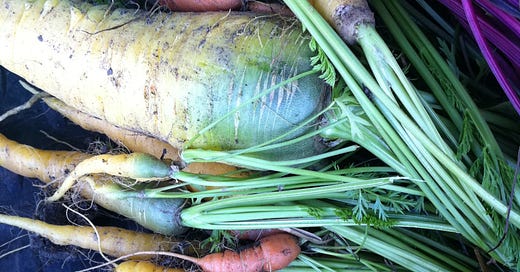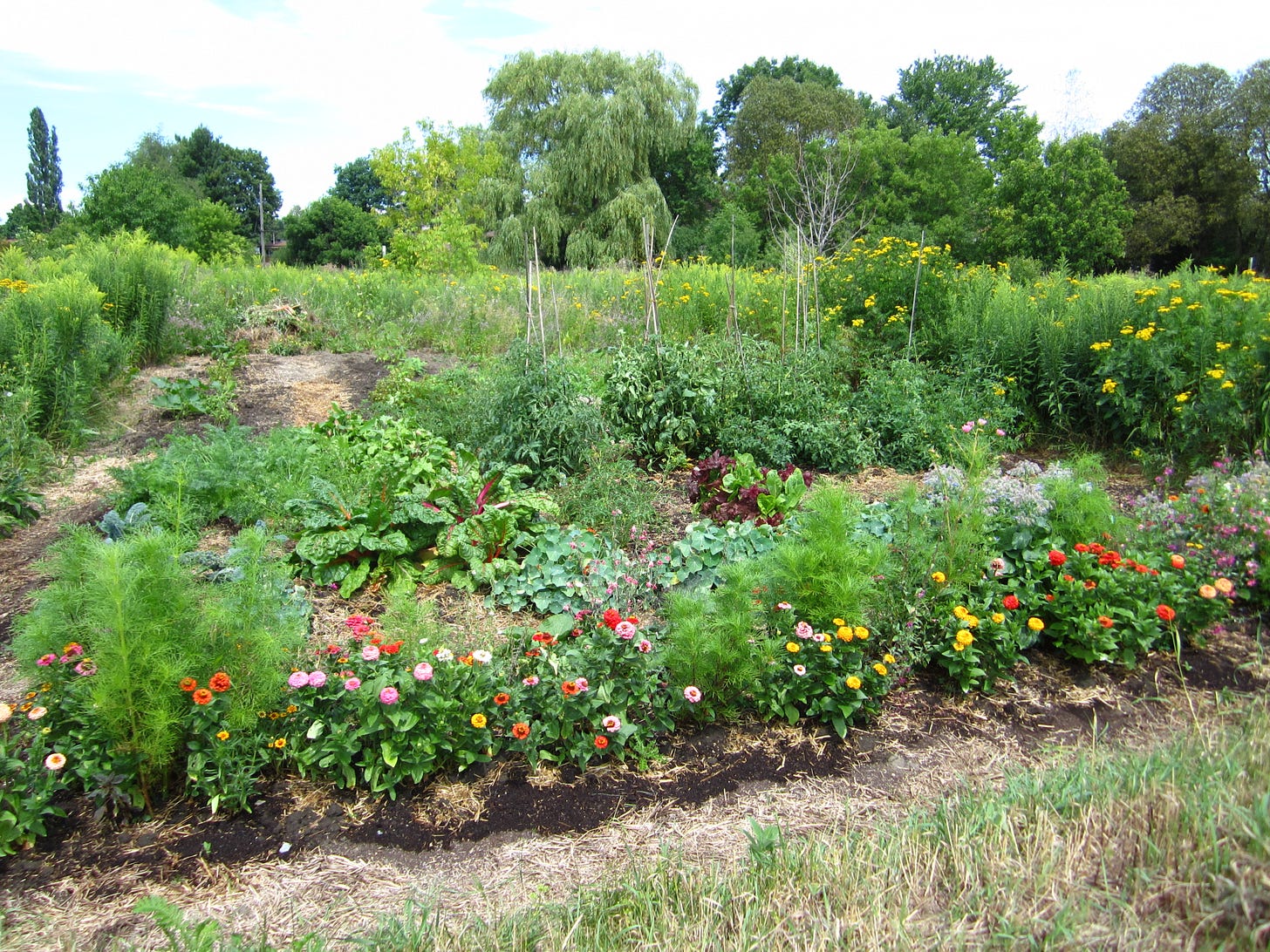The other day I was choosing a frame for a painting and mentioned to the “art consultant” that I was probably going to paint the wall some shade of gray (yikes, just typing that made me cringe it sounds so high-fallutin’ — not the gray part but that I’m even talking to an art consultant). He looked down his nose at me and said, “Gray is out.” I laughed. I’m not sure but I might have said, “Do I care?”
When I used to write for the Ottawa Citizen, every spring I would feel compelled to write a “Trends” column. Why, I don’t know. I mean, as you can perhaps tell at this point, I hate trends, don’t you? And I don’t feel that they belong in the garden world…mainly because the things that gardeners should embrace should be tried and true, not things that come and go with the prevailing wind.
So, what should I happen to come upon the other day but an article about 2021 garden design trends from the folks at the British Academy of Garden Design. Ugh. You’d think they’d know better.
This is what I have to say about that.
First, “wildlife friendly gardens”. Duh.
Gone are the days, I hope, of using sprays, powders or granules of any old poison to nuke bugs that are eating your plants, as well as those who are the good guys. According to the Ontario pesticide and herbicide ban that was created in 1990 and underwent about 20 amendments since then, thank goodness only certain products are allowed for cosmetic use. Common chemicals like glyphosate (the active ingredient in Round-up), Diazinon, 2, 4-D are now only available under certain circumstances, for example, if you need to eradicate pests or noxious plants due to health and safety concerns. An example of this would be to kill poison ivy or hogweed, or to discourage rodents, indoor pests, wasps, mosquitoes or fleas and ticks. So, that means if you have grubs or chinch bugs or dandelions in your lawn, you’re no longer able to blast them with chemicals. That’s not to say that some allowable treatments might be detrimental to soil organisms or creatures; for example, soap (i.e. Safer’s soap), mineral oil, diatomaceous earth and borax are all non-selective and if a good bug is hit with them, they’ll die just as surely as a bad bug.
Of course, when I think of wildlife, I think of doe-eyed deer lazily munching on forest saplings, Peter Rabbit eating new veggie shoots or bees and birds feasting on nectar and seeds …. but of course, not my saplings or my shoots! But planting perennials, vines, shrubs and trees that will benefit the many tiers of wildlife that depend on them for their very survival seems a no-brainer, right? I am reminded of the video of the guy who planted a vegetable garden expressly for the brazen groundhog who visited his plot daily and ate everything in sight. Or the battle Michael Pollan had with his groundhog, that ended in a resigned truce in his book Second Nature: A Gardener’s Education - this is a must-read!
In the end, we should do all we can to encourage biodiversity in our own gardens. That means to choose plants that provide nourishment and protection, to live and let live, and to eschew chemicals, whether synthetic or otherwise, that might inadvertently harm the creatures that we see as well as those we don’t.
Second, “build your own food garden.”
This appears to be “a thing” now, especially as we approach the Summer of Covid II. We seem even more sensitized to “germs” now and this has partly translated into feeling compelled to produce of our own food and ensuring it is “pure”, that is, grown without the use of chemicals. This is not new, but it does feel like there’s a new sense of urgency. Of course, gardening also allows us to be in the fresh air, and eliminates the need for wearing a mask inside the grocery store, co-mingling with possible human hosts of this deadly virus.
But I can tell you that building your own food garden is not for the faint of heart.
Nine years ago we rented an allotment here in town and set about to grow our own. After back-breaking work, it looked like this:
Pretty, eh?
And then by harvest time, several months later, it looked like this:
The chard and lettuces had bolted, the ground underneath the tomato plants were littered with half eaten tomatoes (thanks rabbits and groundhogs), the nasturtium were producing a lot of leaves and not many flowers, and the cosmos were rising ever higher, refusing to bloom.
Granted, I could only see the garden through puffy eyes and sneezes because of my allergies due to the ragweed that was encircling our plot. It was great to harvest fresh vegetables and put the flowers I had grown from seed in a vase, but we soon found we could not keep up! And working all week on other peoples gardens left precious little energy or time for constant maintenance that was necessary at our plot. The weeds, I tell you, the weeds!!!
All that being said, I do recommend it. Anyone who loves to weed, to be patient and then jump into serious action in August and September should succeed. My advice: start small.
Third, “gardening sustainably.”
See Point #1. This basically means gardening in such a way as to not waste resources, nor to negatively impact the soil and air — practically speaking, to “recycle, re-use and reduce”. So, if you can, don’t buy new supplies, rather search out used tools, planting pots, etc.; recycle water by using rain barrels; reduce waste by composting — all for starters!
Fourth, “outdoor living spaces.”
Any real gardener will likely cringe when they hear this phrase. And I’m one of them.
What it is code for is: construct a patio over perfectly good soil, put some furniture out there, add a fake fire pit, a barbeque or perhaps even an “outdoor kitchen” and finish it off with some planters full of the same plant, preferably pyramidal cedars for screening and you’re done. What’s next? An outdoor lavatory? Ugh.
In my opinion, an “outdoor living space” has very little to do with plants and everything to do with furniture. And a bunch of furniture doesn’t make a garden. Period.
Fifth, “balcony gardening and small gardens.”
Really? A trend? What about those of us who have *always* had small gardens? Or those of us who can only garden in pots on a balcony? Perhaps its a reference to us “olders” who are downsizing to condos or townhouses, thereby leaving behind huge gardens with big lawns.
I say these small spaces are charming, always have been and always will be. And they afford us some respite from the grueling work of tending to large beds and equally large lawns.
And last, “curvilinear forms.”
I’m certainly a fan of rounded edges and sinuous lines, especially in the garden, but if you’re not, there’s absolutely nothing wrong with making a more formal garden with straight lines and sharp corners. In fact, there can be something elegant and charming about making a geometric frame and having a wilder garden inside.

The gardens that surround Sissinghurst Castle in southeast England are well-known for their axial pathways and wild perennial plantings inside. Harold Nicholson and Vita Sackville-West designed and planted this garden (with the help of many talented gardeners) in the years between 1930 and 1960. It is well-known to garden lovers today as an example of “garden rooms”, which provided a geometric framework for billowy and effusive plantings - the dichotomy of which is very satisfying but is clearly the opposite of using “curvilinear forms”. This type of garden is still widely embraced today although it is comparatively rigid compared with contemporary “wild” or “naturalized” styles. That’s ok. There’s room for all of it. And no rules about mixing and matching.
This view down the monumental stone staircase at Chanticleer is certainly not curvilinear but still extremely satisfying to the 21st century eye. Especially as the rigid lines direct our sight squarely to the rustic pot in the far garden bed. One can argue that the very nature of including perennials in a planting provides enough texture, dynamism and colour graduations to please the eye without needing “curvilinear forms” to provide movement and life.
And this is why I don’t ascribe to trends. Good gardening is just that. But that doesn’t mean that you can’t dip your toes into something new this year. But chances are, it won’t become a trend…maybe just either a serendipitous choice (or terrible mistake) you made in 2021.








